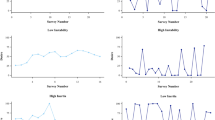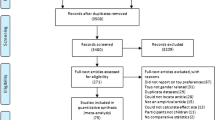Abstract
Fifteen females with a history of idiopathic sexual precocity were selected without known sampling bias. They had been followed for as long as 18 years. They showed various behavioral characteristics as a group, but were also individually unique. If the IQ permitted, they benefited socially from school acceleration. Left to their own devices, the majority preferred friends nearer to them in physique age rather than chronologic age. Play interests, though influenced by the age of playmates, showed no features unique to the precocious onset of hormonal puberty. About half of the girls had occasional moody or depressed spells and wanted to be left alone. Maternalistic interests were strongly represented; only one girl was a tomboy. Masturbation and sexual play in childhood were rarely confirmed, and in no instances were totally contrary to family or community mores. No consistent progression of erotic dream content was discerned. Dreams of having a baby were rare, but antedated intercourse dreams, which were also rarely reported and did not include sensations of climax. Whereas the youngest age of having a serious boyfriend was 8 years, and the youngest age of intercourse, 11, the majority of girls did not report romantic and sexual involvements before the middle teenage years or later. In the three instances of marriage, the youngest was at age 21. Motherhood has so far been achieved by only one patient. She delivered her first child at age 11. The visible appearance of early sexual development and early advanced statural growth created a problem in childhood human relationships for most of the girls, regardless of what they said, and regardless of their skill or ineptitude in handling it. They all benefited even from minimal counseling, as did their parents. Early appearance of physical sexual development does not automatically lead to premature engagement in erotic activity or promiscuous sexual behavior. Such activity and behavior require appropriate experience and facilitating knowledge of erotic opportunities.
Similar content being viewed by others
References
Conner, D. V., and McGeorge, M. (1965). Psychological aspects of accelerated pubertal development.J. Child Psychol. Psychiat. 6 161–177.
Gardner, L. I. (ed.) (1969).Endocrine and Genetic Diseases of Childhood. W. B. Saunders, Philadelphia.
Hamburg, D. A., and Lunde, D. T. (1966). Sex hormones in the development of sex differences in human behavior. In E. E. Maccoby (ed.),The Development of Sex Differences, Stanford University Press, Stanford, California.
Hampson, J. G., and Money, J. (1955). Idiopathic sexual precocity in the female.Psychosom. Med. 17 16–35.
Hoffman, J. W. (1967). The sexually precocious girl.Med. Aspects Hum. Sexuality 1 12–17.
Lloyd, C. W., Lobotsky, J., and Morley, M. (1950). Precocious puberty.Pediatrics 6 343–350.
McGeorge, M., and Conner, D. V. (1961). A case of precocious puberty in a female.Arch. Dis. Childhood 36 439–448.
Money, J. (1965). Negro illegitimacy: An antebellum legacy in obstetrical sociology.Pacific Med. Surg. 73 350–352.
Money, J., and Alexander, D. (1969). Psychosexual development and absence of homosexuality in males with precocious puberty: Review of 18 cases.J. Nerv. Ment. Dis. 148 111–123.
Money, J., and Meredith, T. (1967). Elevated verbal IQ and idiopathic precocious sexual maturation.Pediat. Res. 1 59–65.
Money, J., and Neill, J. (1967). Precocious puberty, IQ and school acceleration.Clin. Pediat. 6 277–280.
Reuben, M. S., and Manning, G. R. (1922). Precocious puberty.Arch. Pediat. 39 769–785.
Reuben, M. S., and Manning, G. R. (1923). Precocious puberty.Arch. Pediat. 40 27–44.
Wilkins, L. (1965).The Diagnosis and Treatment of Endocrine Disorders in Childhood and Adolescence. 3rd edition. Charles C Thomas, Springfield, Illinois.
Author information
Authors and Affiliations
Additional information
Supported in research by Grant 5K03-HD18635 and Grant 2R01-HD00325, USPHS.
Rights and permissions
About this article
Cite this article
Money, J., Walker, P.A. Psychosexual development, maternalism, nonpromiscuity, and body image in 15 females with precocious puberty. Arch Sex Behav 1, 45–60 (1971). https://doi.org/10.1007/BF01540936
Issue Date:
DOI: https://doi.org/10.1007/BF01540936




